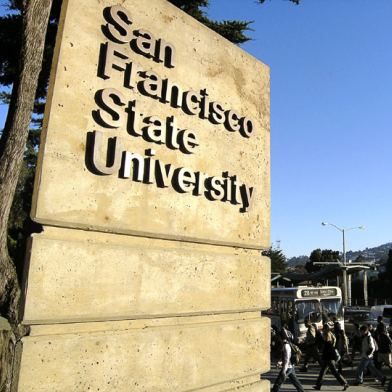
The science building at San Francisco State University that was closed in January after the discovery of asbestos, mercury and other dangerous materials will partially reopen in April and May but much of it will remain closed throughout the semester, university officials said.
An office wing originally constructed in the 1960s will reopen in late April for faculty and staff use, SFSU president Les Wong said in an email to faculty and staff, while a 1950s-constructed wing housing classrooms, labs and offices will reopen May 15.
Classes will remain in alternate locations throughout the semester and four chemistry labs, the chemistry stockroom and the basement need significantly more work and will remain closed for a minimum of one year, university spokesman Jonathan Morales said.
The building was closed after a routine inspection in December found dangerous levels of asbestos, mercury, lead, arsenic and other substances. Originally school officials thought the work could be done over the winter break but concluded that it would take longer to make the building safe.
School officials said last month that tests showed that the dangerous substances were at levels below regulatory maximums and there is likely no health risk to anyone who used the building.
The closure relocated or canceled more than 235 class sections and displaced 6,000 students and 250 faculty and staff members, Wong said in a town hall meeting held Feb. 13 to discuss the closure.
Some faculty complained at that meeting that the relocation was handled poorly by the university, saying they were rushed out of the building with little notice and have not been able to collect files and other teaching materials left inside.
“I am extremely grateful to all of the staff who have worked so diligently to restore offices for our faculty and staff, and provide research scientists with lab space,” Wong said in his email. “They are working aggressively to expedite the remediation work as quickly as possible, and it is appreciated.”
He said that much of the building is more than 50 years old and falls “far short of supporting 21st century instruction and research” and that a long-term solution to the building’s problems has not been reached.
At last month’s meeting, university officials said that other buildings on campus, including the Business, Creative Arts and Fine Arts buildings, would get environmental assessments in late February to check for similar substances.
University officials could not immediately comment on whether any the inspections of those sites had uncovered any problems.
Scott Morris, Bay City News









